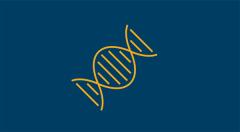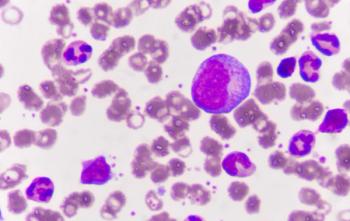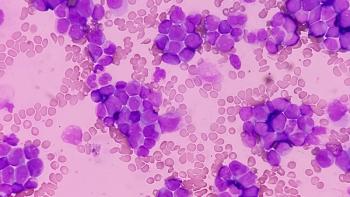
Consistent Monitoring for ESR1 Mutations Essential in HR+, HER2- mBC
Patients with HR-positive, HER2-negative metastatic breast cancer should be consistently tested for ESR1 mutations to inform next lines of therapy.
Episodes in this series

Supporting patients with hormone receptor (HR)-positive, HER2-negative metastatic breast cancer as they move to the second line of therapy can be done in part by educating patients on adverse events (AEs) in advance and consistently testing patients for ESR1 mutations, said an expert.
Following a Community Case Forum with Oncology Nursing News, moderator Tajuana Bradley, MS, FNP-BC, a nurse practitioner at Northside Hospital Cancer Institute in Atlanta, Georgia, explained that advanced practice providers (APPs) and nurses should keep in mind a patient’s previous treatment and continue to monitor for the development of ESR1 mutations following prior endocrine therapy.
Bradley also mentioned that educating patients early can help prevent the development of AEs. As Bradley highlighted, APPs play a unique role in providing additional support for AEs as well as being the first point of contact for many patients.
Transcript
Some of the things I think we should be taking into consideration are, what prior treatments have the patients had? How long were they on that therapy? Because we know there’s an evolving role of ESR1 mutations, and so trying to keep in mind [which] previous endocrine therapies these patients have, and it’s also just trying to stay current and abreast of the ever-changing treatment patterns that we’re seeing, right?
For me, beyond the second line for these patients with HR-positive, HER2-negative metastatic breast cancer, we’ve seen a lot of evolution in the past several years, when we think about targeted therapies, such as your CDK4/6 inhibitors. We’ve also seen an increasing use of SERDs [such as] elacestrant.
Also keep in mind the integration of your PI3K inhibitors, your Akt [inhibitors], as well as your mTOR inhibitors. Those are all things, particularly thinking as APPs and RNs, that we should be thinking about. How can we tailor these therapies based on the molecular profiling that we may or may not be getting, either a presentation or as these patients progress through their lines of therapy.
And when you’re thinking about breast cancer, [you’re] usually talking about a population [that is] mostly women, right? So, these may be women who are having to work, navigate parenting, and all those things that come along with being a woman being diagnosed with metastatic breast cancer. How do we sequence therapies? And then just looking at NCCN, because, you know, things change and evolve there as well. Do you use [sacituzumab govitecan-hziy; Trodelvy] first? Do you use [fam-trastuzumab deruxtecan-nxki; Enhertu]?
These are all things that I think, as clinicians, we’re having to now consider, and then also, informing our patients, so they can also help us navigate these discussions and make sure that they’re informed as well.
One of the ways that we as APPs...can leverage our best capabilities is talking about [adverse events; AEs] and toxicities and helping our patients manage and navigate those [adverse] effects that we can possibly see when we’re thinking about choosing a treatment [such as] elacestrant.
The data may tell us that up to 40% of our patients beyond the second line may have ESR1 mutations. When we really look at our patients who we actually see and treat, we are only seeing about maybe 5% of those patients, and so that’s something to keep in mind as well.
One of the things that we took away from is just remembering that we may have to test more than once, again, because this is an acquired mutation, and it may take us going back, repeating and getting another [ctDNA test]. Sometimes, I know patients may not always want to do [it], or [they] worry about the cost of some of this testing, but it really is important. And in terms of helping us to decide what’s going to be the next step, it takes us educating our patients about the AEs, what the efficacy is, and our ability to provide anticipatory guidance, right? Early intervention is going to be key. Supportive care really helps our patients maintain their dose intensity, because you really want patients, if you’re going to go on this therapy, to get the most out of that option.
Talking early on about some of these biomarkers that we check and why, and helping [patients] understand when we’re picking therapy [is important to their care]. Because oftentimes patients will come in and say that they know someone else who had breast cancer, and they got “this” treatment. Or can’t they get “this?” That’s where we really have a great opportunity to educate them about some of these key differences from one patient to the next and why it’s important for us to test, maybe testing at every progression. That may sound [like] a bit much, but again, we know that this mutation is acquired, and so it may change over time.
This transcript has been edited for clarity and conciseness.
Newsletter
Knowledge is power. Don’t miss the most recent breakthroughs in cancer care.




























































































